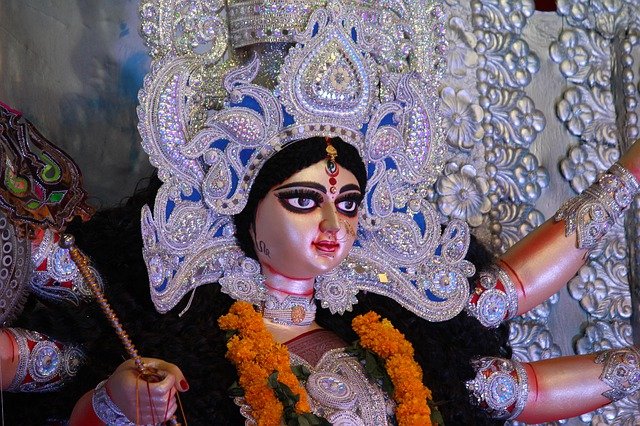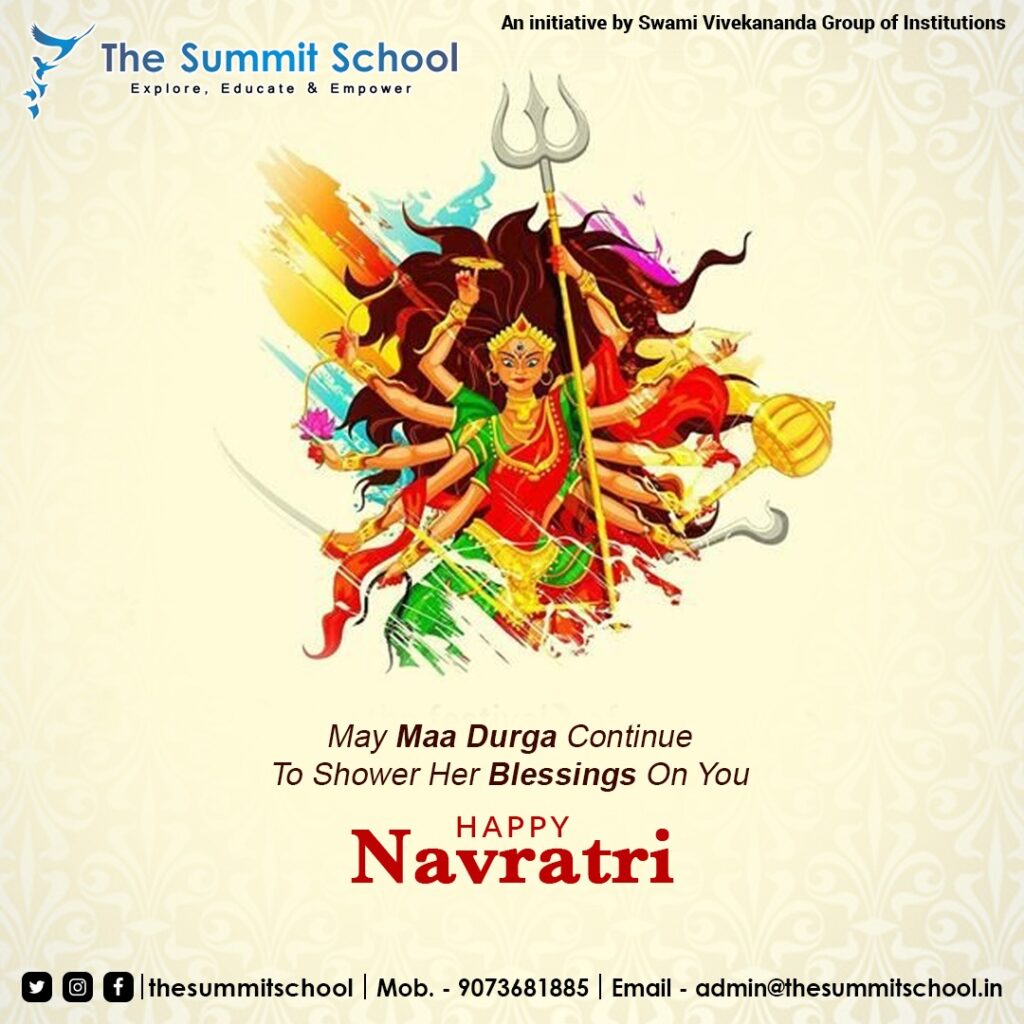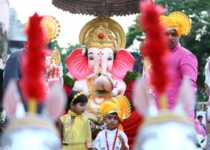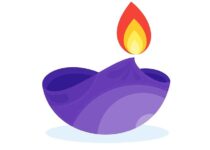The History of the Durga Puja Festival – Facts about Durga Puja
The History of the Durga Puja Festival – Facts about Durga Puja – Durga Puja is a much-awaited festival celebrated all over India every year during the month of Ashwin in the Hindu calendar. Each year the festival is celebrated with much pomp and fervor among Hindus in the country. The festival is known by different names and follows different customs in each state. However, the significance of the festival lies in similar origins according to Hindu mythology. Durga Puja is usually celebrated a week after the beginning of Mahalaya or Navratra. Mahalaya marks the duration of the battle between Goddess Durga and Mahishasura that lasted for 10 days.
This year Navratra begins on 7th October lasting till 15th which marks the 10th day also known as Vijayadashami, also known as Dussehra. The Hindu Calendar is such that the tenth day of Navratra also marks the day when Lord Rama defeated and cremated Ravana according to Ramayana in Hindu Mythology. Thus, both these occasions celebrate the victory of righteousness over evil. This year, Durga Puja will be celebrated from 11th to 15th October. Let us take a look at the mythological history of the Durga Puja Festival and know more facts about Durga Puja.
The significance of Durga Puja falls ages ago in Hindu Mythology when the asura(devil) Mahishasura gained the blessing according to which he could not be killed by any human or Devta(God). Gaining this power, Mahishasura attacked Devlok which is believed to be the abode of Hindu Gods. Since he could not be defeated by the Gods there, it was futile to challenge him. Therefore, the Devtas had to leave Devlok owing to Mahishasura’s ongoing destruction and abuse of power.
The Devtas approached Aadi Shakti, who according to Hinduism, is believed to be the ultimate source of life and the creator of the Universe. The holds the ultimate power of creation and destruction in the Universe. To answer the plight of the Devtas, she created Goddess Durga. It is believed that Goddess Durga was manifested with powers taken from all the assembled Devtas.
Goddess Durga descended on Earth from Kailash Parvat on the first day of Mahalaya. A fierce battle took place between her and Mahishasura. On the 10th day, she ultimately destroyed the devil and vindicated Devlok. The word Navratra means “nine nights” and the tenth day is known as Vijayadashmi or the “tenth day of victory”. Vijayadashmi is the day when the righteous Devi defeated the devil and set humanity and Devtas free. Thus, Hindus celebrate Navratra with great veneration and ask for protection and blessings from Goddess Durga.
The festival also establishes the feminine power as protector and destroyer of the universe. This is a great cultural lesson we can take from Hindu mythology which has always upheld strong female figures and has celebrated feminine power.
Mahalaya is marked with the welcoming of Goddess Durga into our homes for the duration of 10 days. Idols of Goddess Durga are decorated and established in households and pandals. People indulge in deep religious fervor during these ten days. A great puja is organised each night to worship the goddess. Hymns are sung in her praise and people fast during the days and eat just once in the evening. The people who fast consume special food made out of buckwheat flour and vegetables.
It is believed that Goddess Durga, while being in battle with Mahishasura, consumed buckwheat flour and the tradition is thus maintained. On the ninth day, people end their fasting by organising a huge feast and cooking all kinds of delicacies. The day is marked with feeding these delicacies and offering gifts to small female children who represent Goddess Durga and then ending the fasting.
Table of Contents
The History of the Durga Puja Festival
Hindu mythology links all the Gods with nature. Each of the nine days of Navratra has a natural significance linked with different versions of Goddess Durga. Let us take a look at this one by one:
- Day One- Mata Shailputri- Goddess Durga here is referred to as the daughter of the mountains as she descended from Kailash Mountain which marks her origin. Shailputri is linked with the colour yellow which signifies happiness, brightness, and a cheerful environment. The Goddess is also linked with mother nature and it is believed that her favourite flower is jasmine.
- Day Two: Goddess Brahmacharini- This day brings out the significance of the colour green which stands for exuberance and nature. It is believed that if you wear this colour on the second day of Navratra, it brings renewed energy and freshness into life.
- Day Three: Mata Chandraghnata- This name is associated with the moon. This version of Goddess Durga carries a mark of a half-moon on her forehead and is associated with grey colour. The colour grey is associated with darkness and negativity. In the context of Navratri, this colour symbolises Goddess’s destructive power against negativity and her victory over evil.
- Day Four: Mata Khushmanda- This name literally means the “smiling Goddess”. Mata Khushmanda is associated with positivity and happiness. She is attributed to have created the universe with her smile. The day is also associated with orange colour which stands for joy, happiness, and positivity.
- Day Five: Skandamata- This form of Goddess Durga is associated with white which symbolises peace and harmony. Skandamata holds Lord Kartikeya in her right arm. Lord Kartikeya (the Hindu God of War) is the son of Lord Shiva and Parvati and the elder brother of Lord Ganesha. Wearing white colour on this day brings the Goddess’s blessings upon the worshipper.
- Day Six: Mata Katyani- Mata Katyani is the beautiful Goddess who carries fierce energy within her. This form of Goddess Durga upholds feminine beauty and power simultaneously. Goddess Katyani is associated with red colour.
- Day Seven: Kaalratri- Goddess Durga takes the form of a dark-skinned Goddess Kali on this day. She is associated with the colour royal blue. The colour symbolises divinity and power, the two-fold qualities of Goddess Kali.
- Day Eight: Mahagauri- The eighth incarnation of Goddess Durga is associated with happiness and peace. Worshippers wear the colour red to appease the Goddess and count on her blessings.
- Day Nine: Mata Siddhidatri- This incarnation of Goddess Durga is associated with pink colour. She stands for purity and compassion among human beings.
In the Eastern parts of the country, the final days of Navratri coincide with the celebration of Durga Puja. This festival is majorly celebrated in Bihar, West Bengal, Assam, Tripura, Odisha, and Bangladesh. Huge idols of Goddess Durga are set up in pandals and devotees come together to worship the Goddess. The festival is also marked with other rituals, such as the reading of scriptures, singing hymns, performing arts, gift exchanges, feasting, and marching of public processions.
The festival brings back the lessons of female authority and power to challenge gender-based discrimination in our society. The different incarnations of Goddess Durga tell us about her power, strength, love, and compassion for mankind. The celebration of Durga Puja maintains that the feminine energy can be very fierce and destructive to fight against evil.
We shared about “The History of the Durga Puja Festival – Facts about Durga Puja” in this post, Enroll your child at the best Cbse Schools in South Kolkata, Admission are open contact us today! Or call us at +91-9073681885. Follow us on our Facebook page & Twitter Social Media Profile for latest updates. Get Your Child’s Admission Best English Medium School in Kolkata.
The Summit School wishes everyone a very Happy Durga Puja. May each household receive the blessings of Goddess Durga this year. Let us all come together and uphold the feminine power of the Goddess. Let us also make sure that each girl child receives the best education to fight off evil in the modern world!




